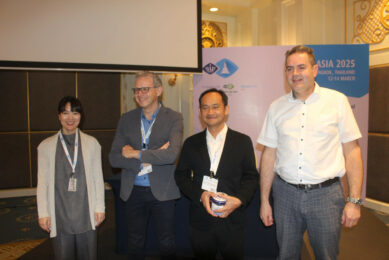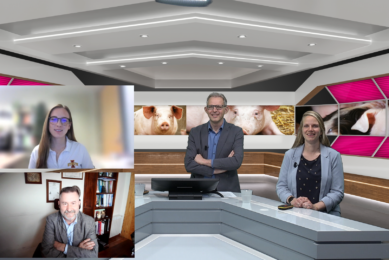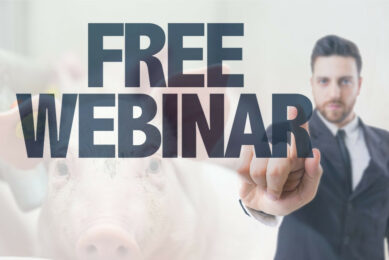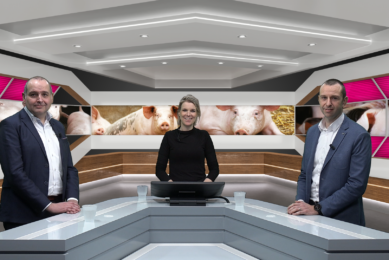On-demand: Webinar on feed efficiency and sustainability
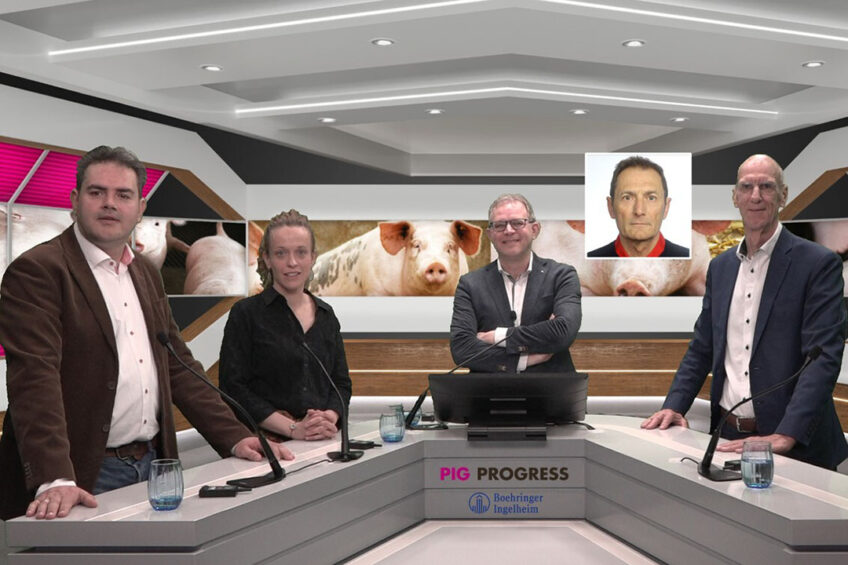
In this first episode of this series entitled ‘The future is Pork’, 4 experts shared their insights during a webinar that focussed on feed efficiency and sustainability. Genetics, nutrition, feed conversion rate, and animal health all play a significant role.
Held twice on 17 March in the Netherlands, and hosted by Pig Progress and in cooperation with animal health company Boehringer Ingelheim, this webinar is now available on demand.
Sustainable pig production for food supply
Prof Dr Leo den Hartog, R&D director at Nutreco and professor at Wageningen University
The first presenter, Prof Dr Leo den Hartog, believes that animals are necessary in a circular food production system. He began his presentation by asking if we have the resources to feed a growing population, and how we can reduce emissions.
He took a look at the evolution of food production and consumption and discussed new technologies, including gene expression, new raw materials, precision farming, and rapid diagnostic. He highlighted that feed efficiency does not only impact feed costs but also means fewer emissions per kg of protein.
Delivering sustainable pork through genetic advancements
Dr Saskia Bloemhof-Abma, genetic services manager at PIC
The second speaker was Dr Saskia Bloemhof-Abma of genetics company PIC, who highlighted how the genetic potential of animals has dramatically improved both the quantity and the quality of weaned pigs, as well as post-weaning liveability. In 1962, she said, producers were expected to wean less than 10 pigs per sow per year. Today, top producers wean more than 35 pigs per sow per year.
She gave an overview of the pillars for accelerating gain and spoke about the size and diversity of populations, measuring what matters, excelling at best science, and selecting for customer success. Looking ahead, she offered some very interesting insights into an FCR of 1.57, and in closing, she highlighted what genetic improvements mean for producers.
Improving feed efficiency to improve pig production sustainability
Alberto Morillo Alujas, PhD, veterinarian and statistician at Tests and Trials
Dr Morillo Alujas joined the webinar virtually from Spain. During his presentation he discussed how improving feed efficiency is a major objective to enhancing pig production sustainability in terms of the economy and the environment. Health improvement, he said, leads to better feed efficiency but no population of pigs will ever be free of infectious pathogens and hence free of immune stimulation.
He demonstrated the impact of US swine diseases on KPI, and in closing touched on what to do to improve feed efficiency, including the use of diagnositic tools, vaccines, and genetic selection.
Sustainability and feed conversion ratio
Rutger Jansen DVM, global senior technical service manager swine at Boehringer Ingelheim
Jansen, a swine veterinarian who has worked for Europe’s largest feed mill company notes that is well known that the major cost price of production is feed, and so future sustainable pork production requires a lower FCR. Improvements in the health of the pigs is also key for sustainable production.
When looking at FCR compared to feed prices, he pointed out that feed prices in Europe fluctuate between € 20 and € 35 per 100kg of feed, which doesn’t take into consideration the impact on prices following the crisis in Ukraine, which could push prices up to € 40. Jansen discussed what this means when producers can reduce feed conversion and look at it economically.
This webinar ended with a roundtable discussion between all the presenters, and questions asked from the audience.



